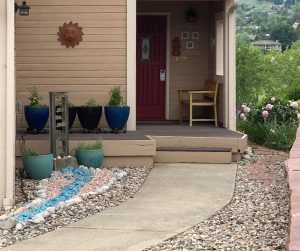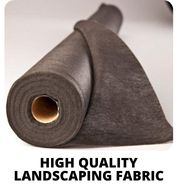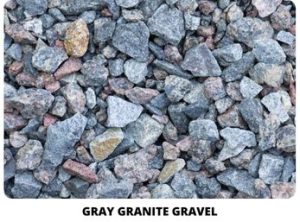Why?
The first 5 feet around the structures on your property are critical to the survival of your home and outbuildings during a wildfire.
More homes ignite due to impinging embers than to any other causes. Embers can travel a mile or more ahead of a wildfire, igniting combustible materials, especially fine fuels like pine needles, dry leaves, wood mulch, and dry grass.
When those materials are in direct contact with your home or other buildings, this quickly leads to structure ignition.
Creating and maintaining a noncombustible zone around buildings is a critical element of wildfire mitigation best practices.
First Five Feet – A DIY Video
View the First Five Feet – A DIY Video on the Wildfire Partners Page
How?
Remove all vegetation (grass, bushes, trees) and any combustible material within five feet from the structures’ walls.
- Dig to bare mineral soil.
- Be sure to extract or kill off roots.
- Install weed barrier to limit the return of vegetation.
- Cover with 3/4″ crushed stone (recommended) or gravel to a depth of at least two inches. Other noncombustible material like flagstone, brick, or concrete is also suitable.
This work can be physically demanding. Consider hiring a contractor if you’re not up for DIY.


Where?
Install a noncombustible surface around your home and all outbuildings on your property.
Adjust the distance so the noncombustible surface extends at least three feet beyond any projections like eaves, covered porches, and decks that are less than 12 feet from the ground.
Keys to a Successful Project
Start by eliminating the existing vegetation.
Effort spent at this stage will be rewarded in the long run. Be sure to extract or kill off roots to prevent regeneration.
Use a high-quality weed barrier landscaping fabric.
- High quality material will perform better over time.
- Double up landscaping fabric for longer protection.
- Choose a porous material to prevent creating drainage issues.
- When weeds inevitably sprout, they should be rooted above the fabric barrier making extraction easy.
Choose the correct size gravel
When it comes to choosing gravel, size matters. We recommend that you choose gravel that is 3/4″ in size.
- Smaller than that, the rock could be displaced by our strong Colorado winds.
- Larger than that, the rock will trap fine debris leading to additional maintenance.
- Color and shape (square vs rounded river rock) are up to you!

How much gravel do you need?
To calculate how much gravel you‘ll need, add together the volume of material needed for each side of your home:
Measure the length, width, and depth of each area in feet, multiply then divide by 27 to determine cubic yards.
For example, if the front of your house is 30 feet wide and you want your noncombustible zone to extend out 5 feet from the house with 3 inches of gravel depth, you’d be looking at:
30ft x 5ft x .25feet = 37.5 cubic feet
If your house has four sides that are the same, you would add 37.5 cubic feet four times to arrive at 150 cubic feet of material. Divide that by 27 and you’ll need around 5.5 cubic yards of material.


Do You Know?
Gravel is generally ordered in cubic yards or by the ton.
- To convert cubic feet to cubic yards, divide by 27
- One cubic yard of gravel weighs about 1.5 tons
